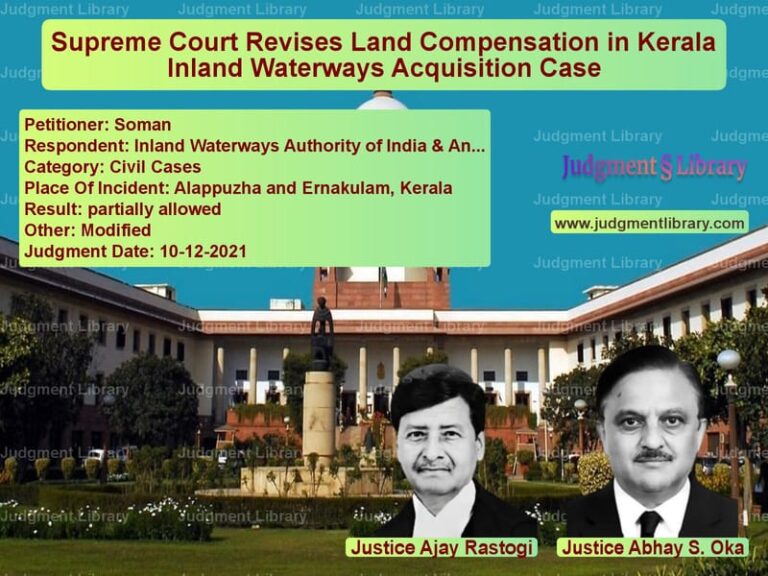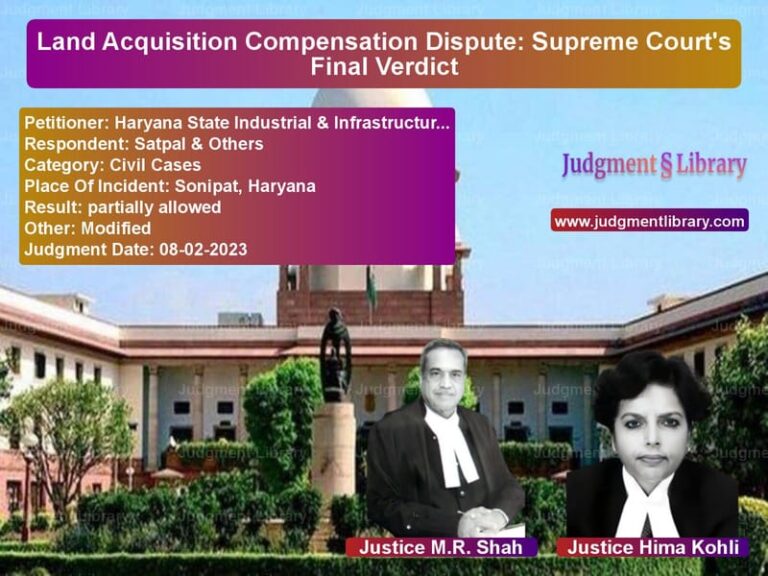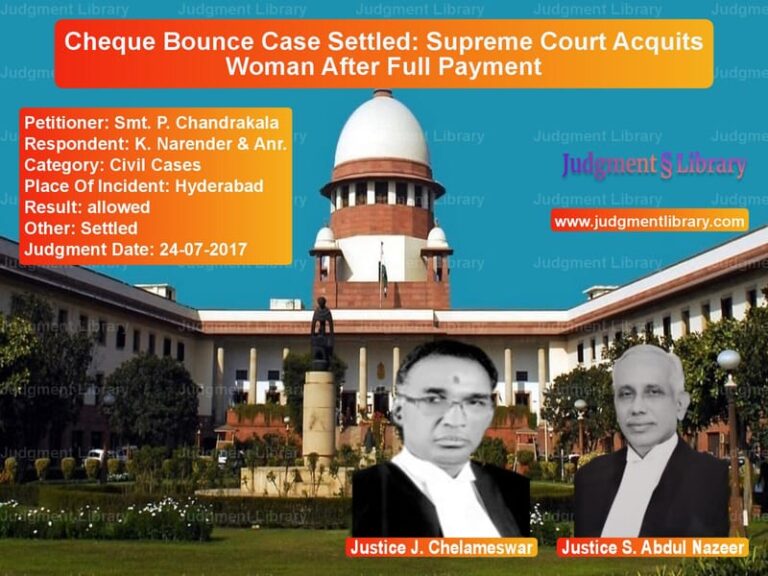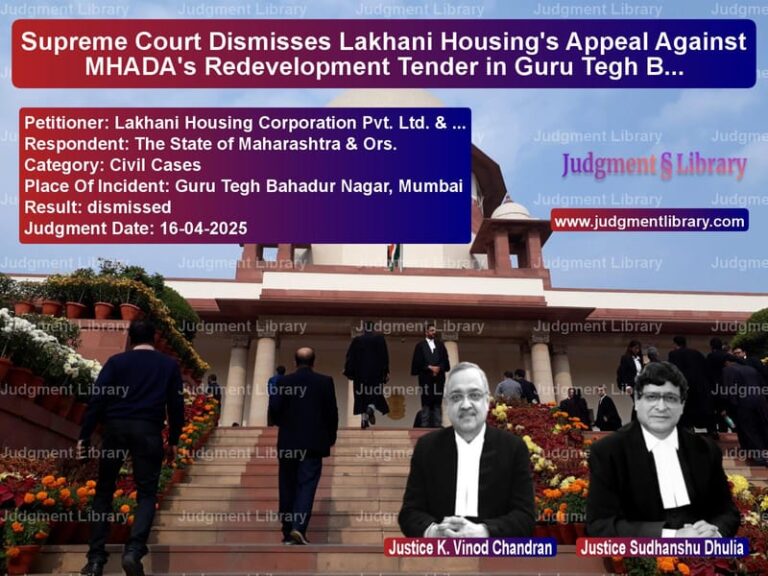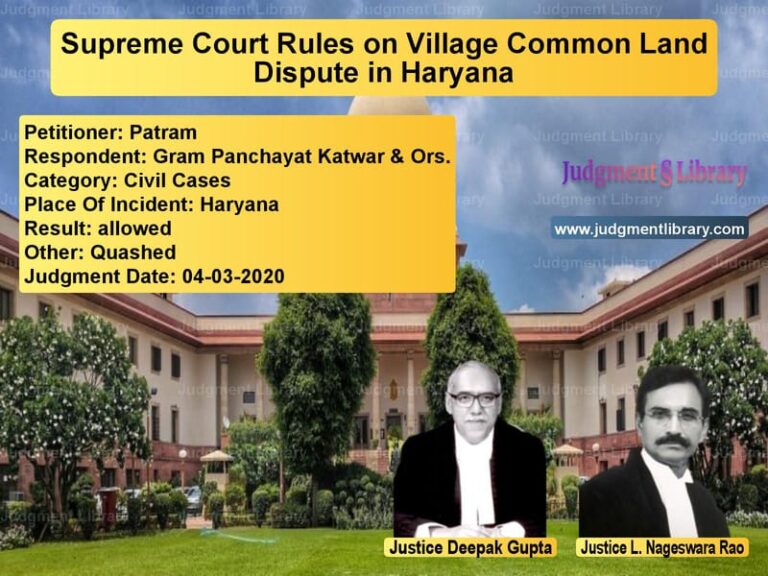Supreme Court Upholds High Court Verdict in Vizianagaram Royal Family Property Dispute
The case of Pusapati Ashok Gajapathi Raju & Anr. v. Pusapati Madhuri Gajapathi Raju & Ors. is a long-standing family dispute regarding the partition of properties belonging to the Vizianagaram royal family. The Supreme Court upheld the High Court’s decision that set aside part of an arbitration award relating to the ownership of 99 diamonds and an emerald ring claimed as stridhana (women’s personal property).
The judgment highlights crucial legal principles regarding arbitration, jurisdiction, and the rights of women over their property. The Supreme Court reaffirmed that an arbitrator cannot go beyond the terms of reference while deciding disputes and clarified the importance of protecting women’s rights over their stridhana property.
Background of the Case
The case revolves around the partition of the Vizianagaram estate. The estate was originally owned by Pusapati Vijayaram Gajapathi Raju (PVG Raju), who was married to Kusum Madgoankar and later divorced her to marry Madhuri Gajapathi Raju (Respondent No.1). After his death in 1995, disputes arose between his two families regarding the division of assets, including land, shares, and personal valuables.
Read also: https://judgmentlibrary.com/supreme-court-upholds-keralas-forest-land-vesting-popular-estates-case/
To resolve the matter, all parties agreed to arbitration, and the Supreme Court appointed Justice S. Ranganathan (Retd.) as the sole arbitrator. The arbitration was meant to determine the rightful ownership of family assets, including 99 diamonds and one emerald ring claimed by Madhuri as her stridhana. The arbitrator’s interim award, passed on May 26, 2007, concluded that the diamonds and ring were originally given to Madhuri but had been relinquished in 1971 during a family partition.
Arguments by the Petitioner
Pusapati Ashok Gajapathi Raju and others, who opposed Madhuri’s claim to the diamonds and ring, argued:
- The family had already settled the division of assets in 1971, and Madhuri had willingly given up her claim.
- The arbitrator was justified in holding that the properties were no longer her stridhana as they had been distributed among other family members.
- The High Court erred in interfering with the arbitrator’s decision and setting aside the findings related to the diamonds and ring.
Arguments by the Respondent
Madhuri Gajapathi Raju countered these claims, arguing:
- The arbitrator had exceeded his jurisdiction by deciding that she had relinquished her stridhana without concrete evidence.
- The terms of reference for arbitration were clear: the arbitrator was only supposed to decide whether the diamonds and ring were stridhana. Since he had found that they were indeed her stridhana, the matter should have ended there.
- The High Court correctly found that the arbitrator had acted beyond his mandate by further ruling that she had given up her claim in 1971.
Supreme Court’s Judgment
After reviewing the case, the Supreme Court, comprising Justices L. Nageswara Rao and B.R. Gavai, upheld the High Court’s decision, ruling:
“The mandate for the Arbitrator is to decide whether the said jewellery is stridhana property of the Respondent No.1. A plain reading of the terms of reference indicates that the arbitrator was not supposed to determine the division of the jewellery if it was found to be stridhana.”
The Court agreed with the High Court’s view that the arbitrator had committed a jurisdictional error by going beyond the terms of reference. The Supreme Court observed:
“Mere handing over of the jewellery to the Appellants in 1971 cannot be the reason for holding that the Appellants are entitled to retain the jewellery.”
The judgment emphasized that since the arbitrator had already determined the jewellery as Madhuri’s stridhana, there was no need to go further and decide its division among family members.
Appointment of a New Arbitrator
Given that the previous arbitrators had stepped down or were unable to continue, the Supreme Court appointed Justice Kurian Joseph (Retd.) as the new sole arbitrator to finalize the division of other disputed assets.
Conclusion
This ruling reinforces the principle that arbitration must be conducted within the terms of reference agreed upon by the parties. It also strengthens the legal recognition of stridhana as a woman’s personal property that cannot be taken away without clear and voluntary consent. The Supreme Court’s decision serves as an important precedent in property disputes, particularly in cases involving women’s rights.
Petitioner Name: Pusapati Ashok Gajapathi Raju & Anr..Respondent Name: Pusapati Madhuri Gajapathi Raju & Ors..Judgment By: Justice L. Nageswara Rao, Justice B.R. Gavai.Place Of Incident: Vizianagaram, Andhra Pradesh.Judgment Date: 09-11-2021.
Don’t miss out on the full details! Download the complete judgment in PDF format below and gain valuable insights instantly!
Download Judgment: pusapati-ashok-gajap-vs-pusapati-madhuri-gaj-supreme-court-of-india-judgment-dated-09-11-2021.pdf
Directly Download Judgment: Directly download this Judgment
See all petitions in Property Disputes
See all petitions in Succession and Wills
See all petitions in Arbitration Awards
See all petitions in Judgment by L. Nageswara Rao
See all petitions in Judgment by B R Gavai
See all petitions in dismissed
See all petitions in supreme court of India judgments November 2021
See all petitions in 2021 judgments
See all posts in Civil Cases Category
See all allowed petitions in Civil Cases Category
See all Dismissed petitions in Civil Cases Category
See all partially allowed petitions in Civil Cases Category



